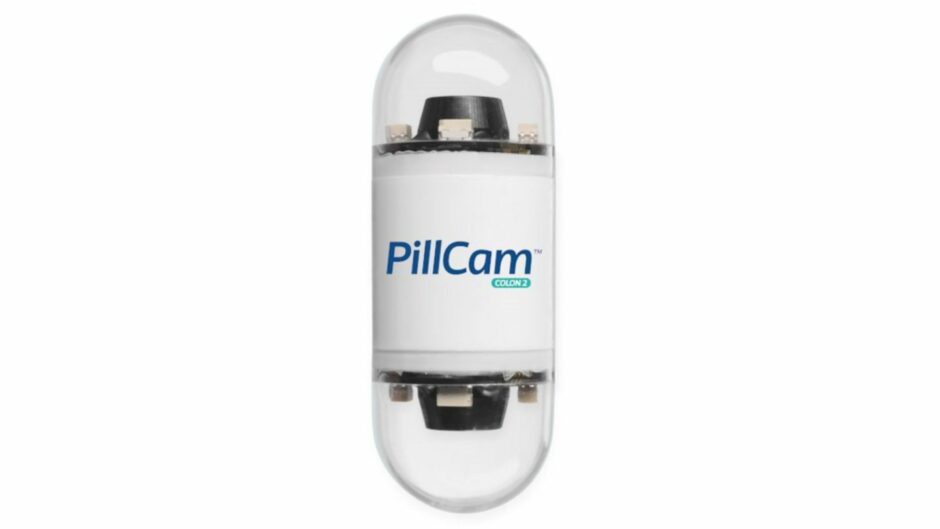
A tiny cancer-detecting camera tablet will be sent to patients across Scotland as the diagnostic tool is rolled out across the country in a bid to cut waiting times.
The pill-sized camera – which patients swallow to capture images of their bowel – is now being routinely sent to patients in the Western Isles and Professor Angus Watson, a consultant surgeon at NHS Highland who is overseeing the programme, explained: “The plan is to deliver this at home starting in the Western Isles and then across Scotland.
“I am proud to say Scotland is the first country in the world to have the colon capsule as part of its normal service.”
The news comes after a £3.6 million cash boost for the Hospital At Home service which aims to cut hospital admissions for elderly patients by providing treatments in their own home.
Watson says the move will reduce stigma about the procedure and detect bowel cancer and other conditions such as colitis and Crohn’s disease. Patients swallow the pill camera, wearing a belt around their stomachs, then the capsule transmits images to a receiver in the belt. The device passes through the digestive system taking 50,000 pictures of the bowel on its way.
The belt then goes to a hospital where the images are analysed by a specialist. In the past, the large bowel was checked by a colonoscopy.
The less invasive colon capsule camera procedure has been used on more than 2,000 patients in hospitals in Scotland.
Watson says delivering the service at home will now save even more lives. He added: “There has never been a more important time to find and endorse new ways to reduce the strain on hospital facilities, with a rollout of more proficient measures of care.
“I have had the privilege of seeing first-hand just how impactful the capsule can be and how it has become a very acceptable alternative to the colonoscopy.
“As we continue to recover from the pandemic, it is hugely important to take a look at alternative ways to detect bowel cancer early so people can be treated as quickly as possible, and so hospital waiting lists do not prevent delays in diagnoses. This move would be very popular with the patients, particularly given the stigma around colonoscopies.
“We are all fully aware of the impact that significant patient backlogs, often causing vulnerable people to fall through the gaps, have had on patients and healthcare professionals across the board.
“We know colonoscopy procedures particularly affect females with the embarrassment and the stigma associated with it, so we’re keen to make the service as equitable as it can be. We all know that this can help health inequalities.
“By summer this year, it’s hoped every health board will have the service in Scotland. Together we must raise awareness of the fact that this is available and that it’s a much kinder option for patients.”

Enjoy the convenience of having The Sunday Post delivered as a digital ePaper straight to your smartphone, tablet or computer.
Subscribe for only £5.49 a month and enjoy all the benefits of the printed paper as a digital replica.
Subscribe